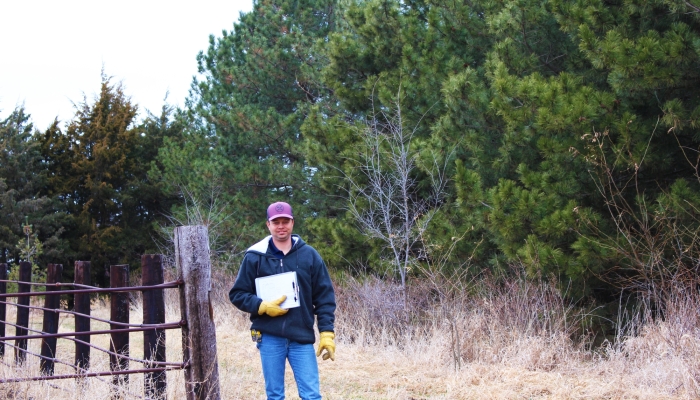Windbreak Success: Tips & Tricks
- Windbreak design will vary based on your needs and objectives. A windbreak to block snow around a cattle pen will look different than one created to attract pheasants for hunting.
- A variety of species means your windbreak will stay healthier and be more resistant to insect attacks (like Emerald Ash Borer or bagworms) and other ailments.
- Windbreaks can be given a more naturalistic look and still provide excellent wildlife habitat and wind protection.
- Site preparation and weed control are essential to establishing a successful windbreak. Loosening the soil and removing competing plants like brome prior to planting, then covering the area with weed barrier after planting, will enable your trees to grow with greater success.
- Inspect your windbreaks regularly for signs of insects and disease. Early identification allows for early control of these situation, before damage decreases the windbreak’s effectiveness.
- In low rainfall regions or under drought conditions, supplemental water may be necessary for the survival of newly planted trees and shrubs.
- A field windbreak to protect crops shouldn’t be too dense. Some porosity is important for even snow distribution. A dense windbreak will cause snow to pile up, which means some parts of the field will be much wetter than others in the spring and could delay planting.
- Windbreaks can provide an additional crop if you plant fruit or nuts, or valuable hardwoods like walnut and maple.
- Red cedars get a bad rap. Yes, they can spread and create more work in a pasture setting, but they are the John Wayne of the tree world, says Jay Seaton, a forester with the Lower Platte South NRD and the Nebraska Forestry Service. “Cedars are rough and tough, and they won’t take nothin’ off of nobody,” says Seaton, noting that cedars are the most reliable tree in the forester’s arsenal. They will take the abuse of Nebraska’s winds and weather and will thrive under most any conditions.
- A row of shrubs is a recommended addition in most tree projects, as they grow fast and provide great wildlife food and shelter. They tend to be easy to grow and dense enough to block wind and snow.
- While you may need to water a new tree planting for a few weeks while it’s getting established, you should not need to add fertilizer—ever. Trees that are over fertilized may become a target for pests.

